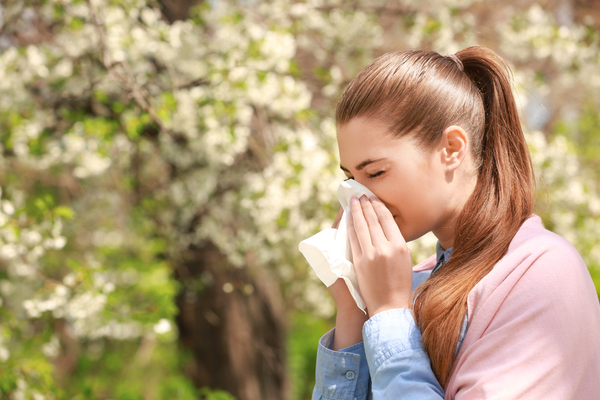Spring is creeping up fast in the United States, and that means warmer weather is on the horizon after a rough end to winter in some locations. Still, for those who suffer from seasonal allergies, there may only be a few weeks left in some parts of the country before allergens kick into full gear.
A team of AccuWeather forecasters, led by Senior Meteorologist Alan Reppert, took a deep dive into forecast data, weather patterns and climate research to forecast what the fast-approaching allergy season will be like — and if there will be an extended or higher-than-usual pollen season.
According to Climate Central, a nonprofit science and news organization based in Princeton, New Jersey, recent research suggests that the growing seasons are being lengthened by more than two weeks compared to the historical average since 1970. This could prolong the symptoms many seasonal allergy sufferers endure.
The first leaves and spring blooms are already arriving in parts of the U.S., according to the USA National Phenology Network (USA – NPN). The USA – NPN, which tracks the onset of spring across the country, says much of the Southeast, lower Midwest and mid-Atlantic states are experiencing the earliest spring on record. But for some locations in the Southwest, such as Arizona, spring is a bit delayed compared to the historical average.
Different allergens will begin to affect Americans at various points in the season, depending on the region and the weather conditions. According to Reppert, trees are commonly the first and most prominent producers of pollen in the spring. By late spring and early summer, grass pollen will start to dominate, and finally, toward the late summer and early fall, weed pollen will take over for the rest of the season.
The weather plays a crucial role in how much pollen is produced, distributed and in the air at any given time. When determining if the pollen levels will be high, average or low, one must consider important factors like rain, wind and temperature.
On warm, windy and dry days, pollen has an easier time circulating, which can increase allergy symptoms. Pollen tends to travel less on rainy, windless days, which can benefit those who suffer from allergies. Dry conditions and drought can reduce certain pollen levels and hinder grass and weed growth.
“The weather and allergy season go hand in hand,” allergist and medical director of Allergy and Asthma Care of New York Dr. Cliff Basset said to AccuWeather in an interview. Basset said more than 50 million Americans are affected by seasonal allergies yearly. Knowing when allergy levels will be high and having a plan will be a “game changer” for many. Just like people check the weather before getting ready for the day, Bassett recommends allergy sufferers check the pollen count before heading out the door in the morning.
“I always say live with Mother Nature, enjoy all the benefits, but do it wisely,” said Basset. “Always check your weather and check your pollen count to know what the pollen count is near you.”
—
Photo Credit: Africa Studio / Shutterstock.com
